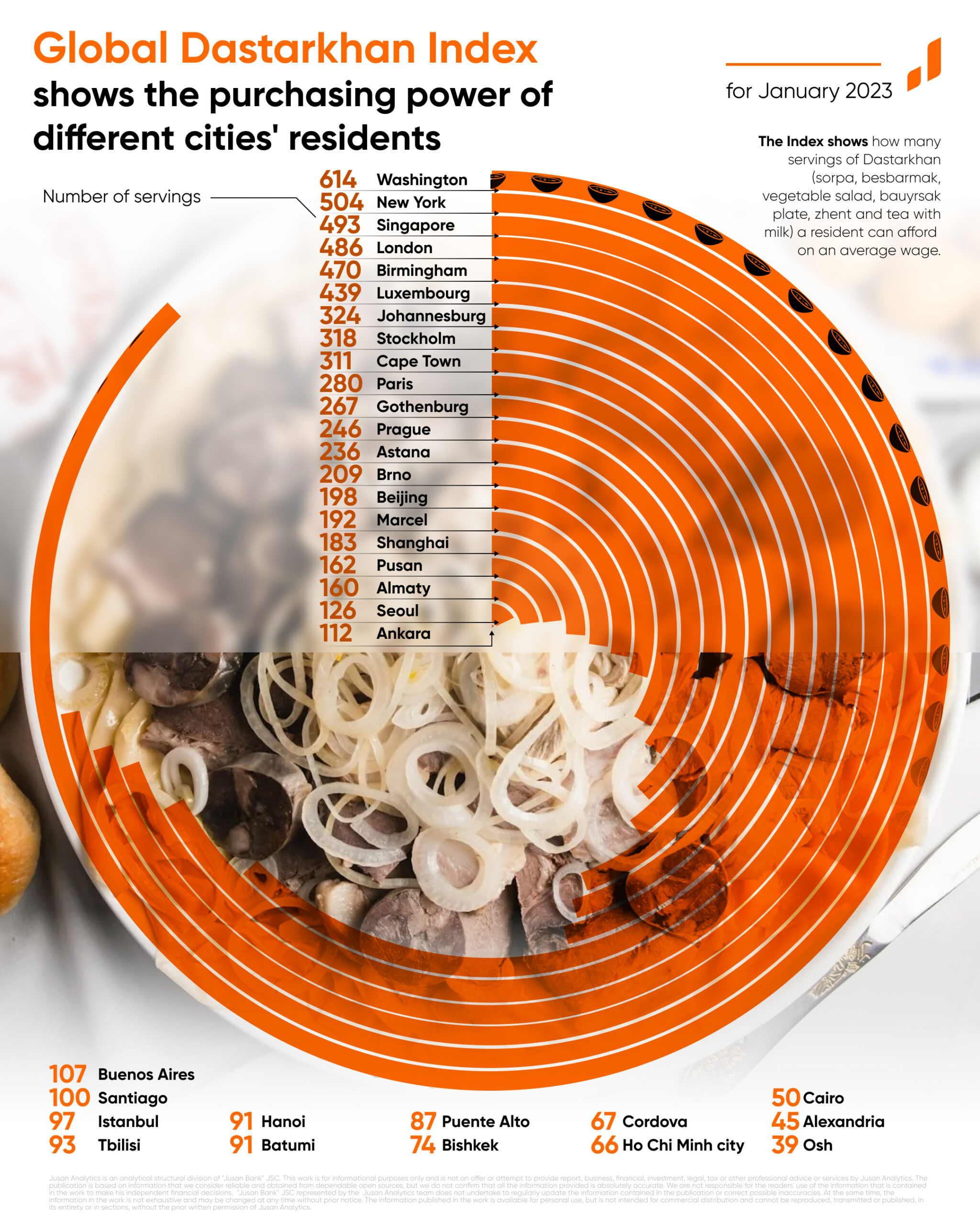On the upcoming spring holiday Nauryz, we decided to evaluate the purchasing power of residents of different cities by combining it into a global version of the Dastarkhan Index – Global Dastarkhan Index (GDI).
Reminder: The Index shows how many servings of Dastarkhan (sorpa, besbarmak, vegetable salad, bauyrsak plate, zhent and tea with milk) a resident can afford on an average wage. In our opinion, this set of dishes or rather all 17 food products used for their preparation cover a significant part of the grocery basket.

We have used data from open sources for 32 cities around the world (prices and average wages) for January 2023 to build up the GDI. And for Astana and Almaty cities – Jusan big-data and official statistics.
So, the residents of Washington and New York can afford the maximum servings of Dastarkhan: 614 and 504, respectively. And the least are residents of the second largest cities of Egypt (Alexandria – 45 servings) and Kyrgyzstan (Osh – 39 servings).
The wide range in the number of servings is explained by the significant difference in wages in these countries, as well as the difference in GFSI (Global Food Security Index), which affects the cost of products. For example, wages in New York are 35 times higher than in Cairo. However, the price of a grocery basket for the Dastarkhan in an American city is only 3.5 times higher.
If we compare the purchasing power of residents of Kazakhstan cities with others, then an Astana resident is slightly inferior to a Prague resident (the difference is 10 Dastarkhan servings), and an Almaty resident surpasses a Seoul resident (the difference is 34 servings) and is almost on the same level with a resident of another South Korean city of Busan (the difference is 2 servings). Thus, we can conclude that the food purchasing power of our cities is quite close to the cities of South Korea, China and the Czech Republic.
 Клара Сейдахметова
Клара Сейдахметова
